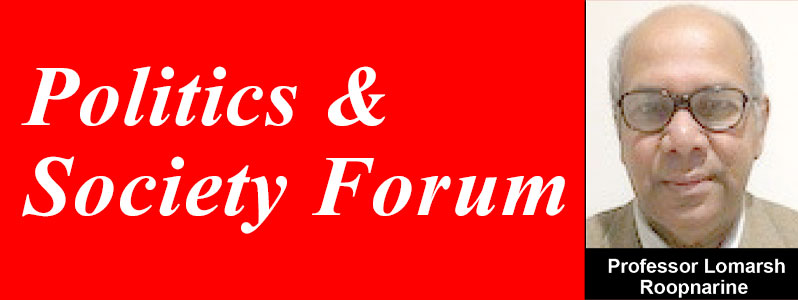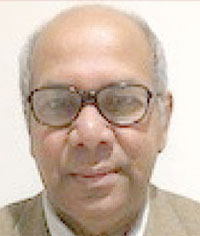LAST week, on March 8, Guyana and the world celebrated International Women’s Day designated to recognise the progressive achievements of women in all spheres of life including the fight against gender inequality.
Although women are a majority population world over, they are considered a minority population because of their unequal access to resources and socially constructed obstacles preventing them from rising from stuck positions in a male-dominated world. This is a universal fact.
In Guyana, and not to exclude other women, most women are from African and Asian backgrounds imported to provide labour for the sugar plantocracy during the period of slavery and indenture in an era of colonialism, imperialism, and rising capitalism. In some ways, women were never meant to be in British Guiana because their overlords preferred a male labour force that codified Victorian-era gender stereotypes that identified men as superior and women as dependents, namely, that women would be unproductive to the plantations. Women were seen by their plantation overlords as financial liabilities through child-bearing and child-rearing, Sigh. Other women never wanted to leave their secured domicile, and when they did arrive in British Guiana, they were stolen, snatched, and forced to do so. They came from myriad backgrounds but a majority were from the peasant class. Their sex ratio to their male counterpart ranged from 3 – 50 females to 100 males and remained so during their bondage to the plantation.
Despite the unfavourable conditions under which women entered British Guiana, they made a significant contribution to the plantation system, defying the odds and myopic views of themselves. They were able to make contributions because of their familiarity with hard work in their former homeland, although their productive roles were somewhat different from the plantation. They were not reduced to dehumanising numbers in their former homeland. Nonetheless, women have been involved in all sectors of the plantation system: weeding, cutting, and loading sugarcane in the harshest conditions during blazing tropical heat and in advanced stages of pregnancy. Women also competed with men for leadership roles in the plantation system experiencing all forms of abuse.
Women were productive in their private domain. They grew provisions on small parcels of land and took them on their heads to be sold to the open markets while carrying out domestic duties, a lifestyle known as a double burden. They were matriarchs, although they have not been fully recognised for that role in Guyana.
With the abolition of slavery in 1838 and indenture in 1920, Guyanese women have branched out of the insular plantations to the domestic sphere as well as penetrated the civil service, working as nurses, teachers, clerks, and so on. The latter was aided by the Universal Education Act of 1876. Despite that the schooling system steered women into “female careers” such as in nursing and teaching, their presence in better-paying jobs had become more noticeable, laying down the foundation for great opportunities. Women were actively involved in the labour and independence movements but their involvement needs more attention and analysis.
Following independence, and indeed up to 1992, was hard for women. The two lost decades of cooperative socialism placed enormous strain on a majority of women, especially those who did not possess a party card. Poor management forced women to step out of their roles and find work stability to bring in income, and, in so doing, transforming themselves into breadwinners and single heads of households, as well as placing further strains on once stable family relationships. Men and women were forced to migrate long distances to secure employment to support their families. To combat daily hardships women turned to trade, known as haggling and huckstering, navigating the market contours of other regions of the Caribbean and further afield. They bought produce, soap, toilet papers, plastic wares, and contraband items selling them on the streets, markets, and roadside stalls. Without access to loans, women pooled their money together, a practice known locally as “box hand,” to help each other.
In the past few decades, women have made tremendous leaps and bounds in Guyana for they are found in politics, law, medicine, education, healthcare, and the civil service. More and more young female children attend and finish their formal education from rural to urban areas brought about by their own initiatives and government efforts. We will be kidding ourselves, however, if we are to conclude that all is well with women in Guyana. A cursory glance at the dailies shows that Guyanese women face abuse, violence, and murder on a daily basis mostly from men whom they give their hearts to. This is a national shame since when we hurt our women we hurt ourselves.
Within feminist thinking, it is long recognised that women are differentiated by social class, ethnicity and religion. Guyanese women are no different. It is not genuinely possible to find substantive common ground in the way urban middle-class Guyanese women live with a hinterland or rural woman. We need to do some work in the area of intersectionality, since, according to Yuval-Davies (1997), women are the ones “who reproduce nations, biologically, culturally, symbolically.” The PPP administration has begun to acknowledge the aforesaid as so revealed in the First Lady, Mrs. Arya Ali’s massive women’s march. (lomarsh.roopnarine@jsums.edu).



.jpg)










